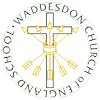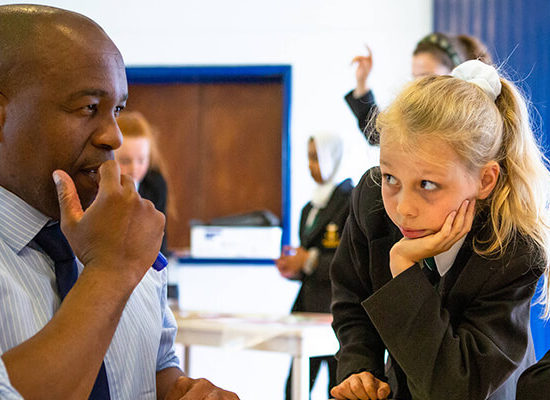
Our daily routines and educational practice are rooted in the twin values of Dignity and Respect.

Mathematics is at the core of the curriculum, providing a platform upon which other subjects can develop. The topics covered at KS3 are continued and extended in greater depth at KS4 and KS5. Mathematics is a life skill and we want students to function numerically in the world. Extra-curricular activities are arranged to enhance student understanding of the practical application of mathematics and to engender a love of subject.
Mrs Michelle HughesSubject Leader for Mathematics |
Mr Thabo NkoaneSecond in Mathematics |
Mr Matthew DippleMathematics Teacher |
Mr Tom McKenzieMathmatics Teacher |
Miss Anika PopatMathematics Teacher |
Mr Josh WynnMathematics Teacher |
We emphasize the importance of basic numeracy skills and believe that students benefit from carrying out mathematical investigations to develop their problem-solving and independent enquiry skills.
We believe that every child should be able to:
Consolidation of learning and key skills, as well as the opportunity to explore, are central to the delivery of mathematics as they reinforce understanding. Homework demonstrates whether students truly understand what they have been learning and is used to tailor teaching in lessons. The cycle of setting and assessing work that is established in the lower years is consolidated at KS4.
The assessment schedule has the intention of helping students with recall and independent revision, skills which we look to develop at each key stage, and is designed to maximise student progress.
We understand the power of an effective intervention programme since progress in Maths is often an individual, rather than a class endeavour. There are a number of supportive intervention strategies used to maximise student confidence and ultimately their progress. For example, we provide small group teaching by experienced Maths teachers for students who may have SEND needs or a specific weakness with numeracy. These run alongside the core curriculum delivery at KS3 and KS4 and allow students to consolidate their learning.
We recognise that for some students, particularly the disadvantaged students, further support enhances their mathematical confidence and ability. This is facilitated through the Maths Nurture Group and small group support.
At A level, we want to give students who enjoy Mathematics the chance to explore it in more depth and to engage with complex, challenging and exciting work. We emphasize the balance between enjoyment and hard work and explain how Maths A Level is a facilitating subject which supports a number of career paths.
The reformed A Level means that students have a broader basis on which to build. In order to bridge from GCSE to A Level, there is a transition module, supported by an algebra assessment which gives feedback to students and teachers. The new GCSEs have provided a better bridge to A Level.
For those students taking Further Maths, we try to give students the opportunity to study all branches of Mathematics, including Decision Mathematics, which complements the single A Level Mathematics course.
Students are taught the following topics in Year 7:
Number
Ratio, Proportion and Rates of Change
Algebra
Geometry and Measures
Statistics
Probability
Students are taught the following topics in Year 8:
Number
Ratio, Proportion and Rates of Change
Algebra
Geometry and Measure
Statistics
Probability
Foundation & Higher Tier
NUMBER, RATIO & PROPORTION
• Arithmetic with integers and decimals, rounding, place value, limits of accuracy and error interval
• Factors, multiples and primes
• Indices, powers and roots
• Standard form
• Fractions and reciprocals
• Fractions, decimals and percentages conversion
• Percentages
• Ratio
• Multiplicative reasoning: direct and inverse proportion, compound measures
ALGEBRA
• Manipulating expressions, expanding and factorising
• Expressions and substitution into formulae
• Linear equations and inequalities
• Straight-line graphs
• Sequences
• Quadratic equations: expanding and factorising
• Plotting graphs: quadratic, cubic, reciprocal
• Rearranging equations and formulae
• Linear simultaneous equations
• Real-life graphs
GEOMETRY & MEASURES
• Plans, elevations, nets
• Constructions, loci, bearings and scale drawings
• Properties of shapes, parallel lines and angle facts
• Interior and exterior angles of polygons
• Perimeter, area and volume: including circles, cylinders, cones and spheres
• Transformations
• Right-angled triangles: Pythagoras and trigonometry
• Similarity and congruence in 2D
• Vectors
PROBABILITY & STATISTICS
• Drawing and interpreting graphs, tables and charts
• Representing data, including pie charts, scatter graphs
• Averages and range
• Statistics, sampling, collecting data
• Probability: including tree and Venn diagrams
Higher Tier only
NUMBER, RATIO & PROPORTION
• Calculations using upper and lower bounds
• Surds
• Repeated proportional change
ALGEBRA
• Expanding triple brackets
• Solving quadratic equations and inequalities, solving simultaneous equations algebraically, equation of a circle
• Algebraic fractions: solving equations, simplifying and changing the subject of formulae
• Algebraic direct and indirect proportion: using statements of proportionality
• Simple algebraic proof
• Nth term quadratic sequences
• Sketching graphs of circles, cubes and quadratics
• Exponential graphs, rates of change in graphs, area under a curve
• Functions and transformations of graphs
GEOMETRY & MEASURES
• Transformations: enlargement using negative scale factors
• Circle theorems and circle geometry
• Similarity and congruence in 3D and geometric proof
• Sine and cosine rules, 1/2 ab sin C, trigonometry and Pythagoras’ Theorem in 3D, trigonometric graphs
• Vectors and geometric proof
PROBABILITY & STATISTICS
• Cumulative frequency, box plots and histograms
• Conditional probability
Students are taught the following topics in Years 12 and 13:
A LEVEL MATHEMATICS
PURE:
APPLIED:
Statistics
Mechanics
FURTHER MATHEMATICS
CORE PURE:
FURTHER MECHANICS 1:
DECISION 1:
We run several enrichment activities each year for students to apply functional mathematical skills in a real-life context and to develop problem-solving, decision-making and teamwork skills including:

Waddesdon Church of England School’s Assessment and Feedback Policy. At Waddesdon our aim is for assessment to be:
